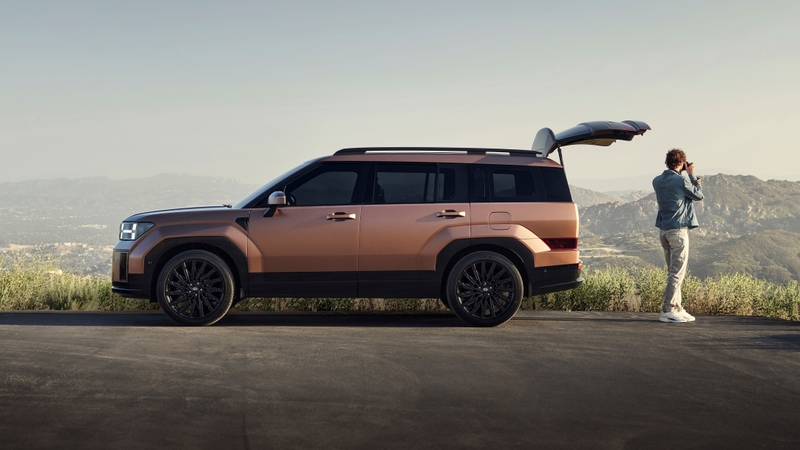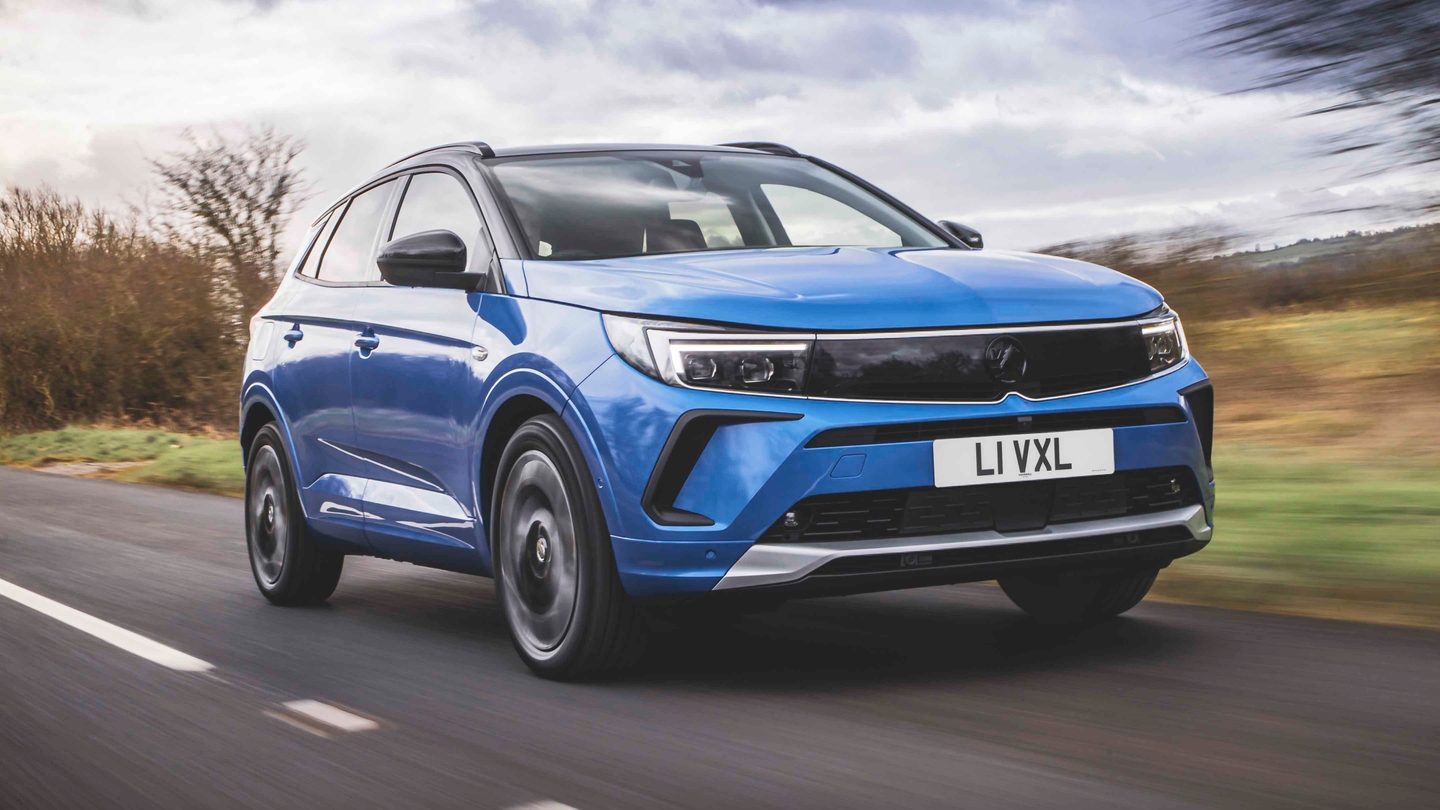












Nissan X-Trail Review

The Nissan X-Trail is the largest SUV the brand sells in the UK, with boxy styling and optional third-row seating in the boot.
Nissan has ramped up the most recent X-Trail's cabin quality, so you'll find more soft-touch surfaces and a more modern design, while the layout remains admirably simple to use. There are no manual models anymore, so your powertrain choice comes down to a mild-hybrid petrol or Nissan's clever E-Power range-extending full hybrid.
- Attractive, practical cabin
- Good refinement for a larger SUV
- E-Power has almost EV-like acceleration
- Not for keen drivers
- Space is tight in the third row
- E-Power economy is good, not great
Should I buy a Nissan X-Trail?
Whether the X-Trail is the right SUV for you or not comes down to what your requirements are. This is a big, boxy family car but it measures less than 4.7 metres long – shorter than saloons like the BMW 3 Series or Audi A4 and less than a foot longer than its midsize Nissan Qashqai sibling.
As a result, you get excellent practicality in a car that's not so enormous that it's hard to squeeze through tight urban streets. There's a caveat here, however, because the X-Trail is optionally available with a sixth and seventh seat in the boot. Annoyingly, as we'll cover in the practicality section below, these seats are more useful on paper than they are in the real world, with very little actual passenger space available if all seven seats are in use.
And, if you're looking at the X-Trail's tall, blocky proportions and thinking "that car probably doesn't feel very sporty to drive", you'd be absolutely right. It's composed and generally comfortable on the move, but this isn't a real rival to SUVs from Mazda and BMW – cars that manage to be both cosseting enough for family use while also surprisingly fun to throw down a twisty country road.

As a brand-new car, the X-Trail is one of the more affordable seven-seat SUVs, and that should translate to the second-hand market. Over time, as more models become available, the X-Trail should become temptingly affordable to savvy second-hand shoppers.
It's worth knowing that the X-Trail's predecessor – built until 2021 – is widely available on the used market with extremely competitive prices. This lacks the refinements made to the latest model but has similar practicality, and the option of diesel engines for higher-mileage drivers.
It feels a bit damning to point out that the X-Trail may not necessarily lead the class in any particular area – there are options out there that beat it for performance, efficiency, price or practicality. But, despite this, it's the X-Trail's overall user experience that makes it such a likeable car. Everything from the plush, spacious cabin, to the soft suspension, to the E-Power model's calm performance just feels geared towards making your life easier.
Interior and technology

The X-Trail's predecessor wasn't exactly known for its interior design. Its cabin felt a little dull and dated, although the build quality and layout were generally fine.
No one's going to hang pictures of the new X-Trail's interior in an art gallery, but it's a much more modern space with lots of horizontal lines giving the impression of extra width. There are also much nicer materials used for the upholstery, dashboard and door panels, including soft-touch surfaces on most major touch points and areas you'll be resting your arms, for example.
We're also big fans of Nissan's commitment to keeping proper buttons in the cabin, so most quick adjustments can be done intuitively without hunting around in the infotainment system. The climate control is entirely button based and all the steering wheel controls are elegantly simple squared buttons that take no time to get used to. You also get important audio controls like volume and track selection prominently placed beneath the screen, again making quick adjustments a doddle.
Lower-spec X-Trails from 2022 and 2023 have an eight-inch infotainment screen in a dash-top pod along with analogue driver's dials with a small screen between them. This setup is simple to use and easy to understand. The touchscreen has fairly basic graphics that might lack the wow-factor of some rivals, but it's straightforward to navigate with a physical home button that takes you back to the main screen.

The upgraded screen setup which was previously available on higher-spec X-Trails – a pair of 12.3-inch screens for the centre and driver's dials – was made standard partway through 2024. This setup is crisp and clear, with persistent on-screen shortcut buttons to quickly jump between functions.
Apple CarPlay and Android Auto are fitted across all X-Trail infotainment systems but you might not need to use them after the 2024 update because Google software including Google Maps is now built into the main infotainment system.
Practicality

Practicality is especially important to big SUV buyers and, for the most part, the X-Trail performs strongly here. Front-seat occupants have all the space they could ask for, plus a lofty seating position and clear visibility that gives you a confidence-inspiring view of the road ahead. The electrically adjustable seats on our top-spec Tekna+ test car were very comfortable but, based on other Nissan models we've tested, we reckon the standard seats will be very supportive, too.
Treat the X-Trail as a five-seater SUV and its practicality continues to impress. With the second row slid all the way back, there's acres of rear head and legroom so very tall adults will have no complaints. This also translates to plenty of extra room to squeeze a bulky child seat into position, aided by the wide-opening rear doors. And, while the fifth passenger in the centre-rear position won't have the comfiest seat or lots of elbow room, the transmission tunnel is fairly flat and wide, so doesn't steal away foot space.
Where the experience falls down is with the optional third-row seats, available on mild-hybrid and E-Power E-4orce four-wheel-drive models. Like the similarly sized Mercedes GLB, these are very cramped and only suitable for teens or short adults. To have any hope of using the rearmost seats, you'll have to slide the middle seats forwards, which compromises legroom for second-row passengers, so travelling fully loaded exposes the X-Trail's inadequacy in this area. Third-row access is also tricky, with a very narrow gap left to squeeze through when you fold the second row forwards.

Boot space is also impacted by the decision to fit and use the third row. In five-seat mode, there's 575 litres of space – that's not quite class leading but is probably more than enough for most buyers, plus the space itself is wide, square and tall. With all seven seats up, you're left with a small hatchback's worth of space – probably enough for a big weekly shop but little else. There's no load lip if you fold the second and third row flat, which makes it easy to load bulky cargo.
Engines and performance

Entry-level models come with a 1.5-litre 'VC-Turbo' three-cylinder engine. This uses clever linkages in the engine to constantly vary its compression ratio for more efficient combustion. With 163hp, performance is decent rather than scintillating and heavy throttle inputs will send the revs flaring as the CVT-style automatic gearbox lets the engine spin up to its power band.
Our test car came equipped with the E-Power engine – specifically, the awkwardly titled E-4orce four-wheel-drive model. This clever setup uses electric motors on both axles to drive the wheels – or just the front axle on standard E-Power models – giving you EV like acceleration and smoothness.
The motor setup draws power from either a small 2.1kWh battery pack or an on-board 1.5-litre petrol engine acting as a generator – the engine never drives the wheels directly. If the battery is nearly empty or the driver asks for full power, the engine can generate electricity and send it directly to the car's electric motor, or use that juice to quickly recharge the battery pack.

It all sounds complicated but, in practice, the setup is easy to use. You drive around normally as if the car was an electric car, and all you have to do to keep it going is refuel like a standard full-hybrid car. There's no recharging the battery from a charge point and no faffing around with cables.
As a day-to-day driving proposition, the E-Power engine is excellent. It's smooth and powerful, suiting the X-Trail's fairly laid-back personality. Our only complaints are that it gets a little noisy under hard throttle as the petrol generator revs up to deliver power to the motor, and that the overall economy achieved by this setup isn't as amazing as you might hope. We reckon you'll be able to crest 50mpg in normal driving – a good figure for a big SUV like this but it's far behind what plug-in-hybrid rivals can achieve.
Driving and comfort

The X-Trail isn't a driver's car. That's not exactly surprising for a big family SUV but some rivals have managed to crack the recipe to make bulky, heavy cars handle well – just look at any model from BMW's lineup, for example!
Drive calmly and the big Nissan won't get in your way. The steering is accurate and quick enough that you don't need flailing arms to complete a tight manoeuvre, and there's plenty of grip and compliance over undulating surfaces. We have no complaints about the pedal tuning either, without any noticeable step between the E-Power's regenerative brakes and the standard friction brakes.
Pick the speed up and it's not quite so accomplished. Sharp steering inputs can send the wheels darting into a corner before the softly sprung body is ready to follow, which sees it tip over and fling passengers towards the outside of the turn. As a result, it's much better to keep the speeds sensible and your inputs measured, which sees the car maintain its floaty ride quality over bumps, making long journeys fairly manageable.
Refinement is pretty strong, too. As long as you avoid burying the throttle to keep engine revs low, there's fairly minimal intrusion from noise on the road, with wind whistle and tyre roar well damped even at higher speeds. You're more likely to notice thuds from the suspension, particularly on very large bumps, which can sometimes beat the soft springs and send a bigger vibration through your seat base.






























































